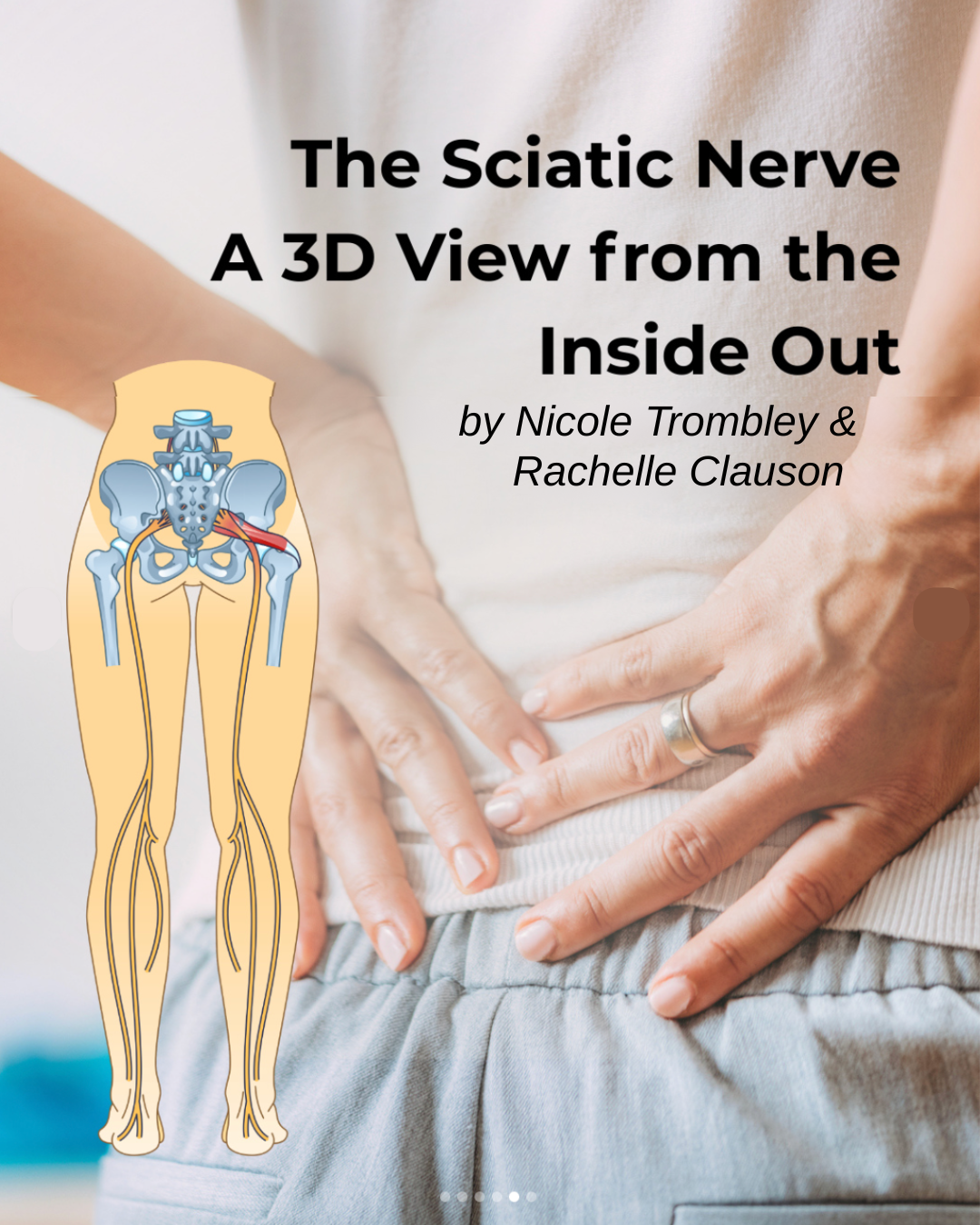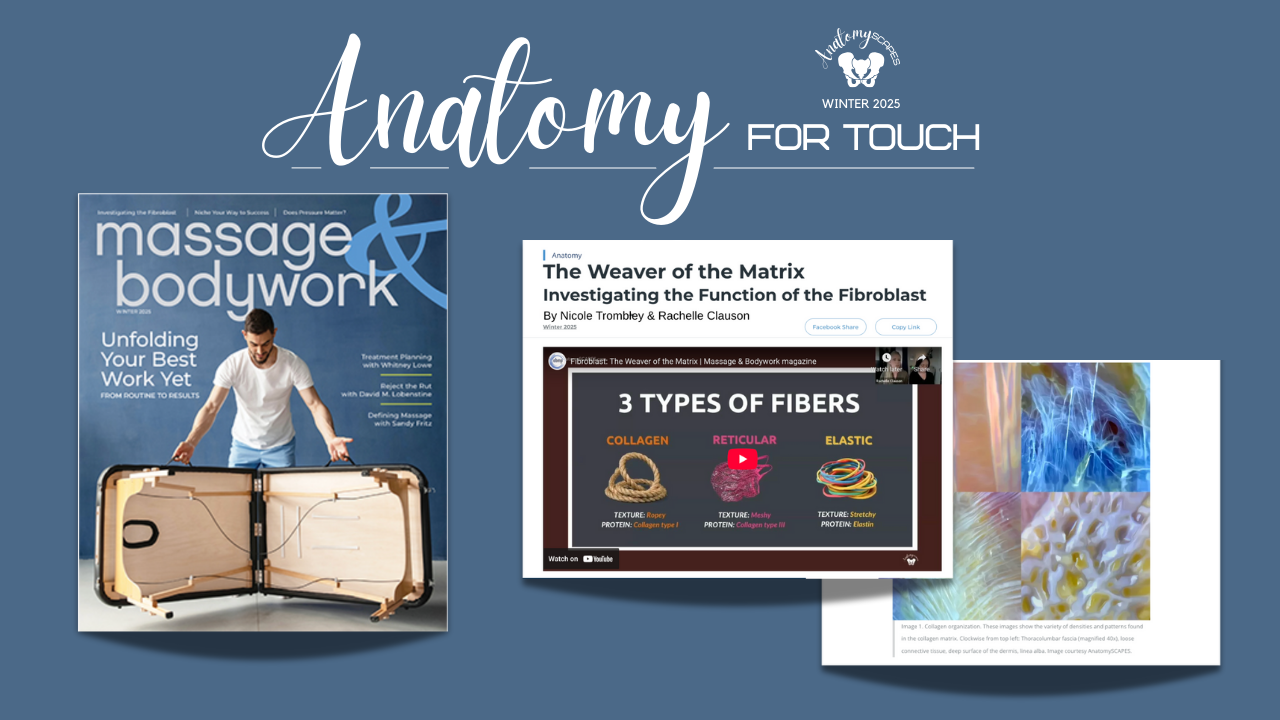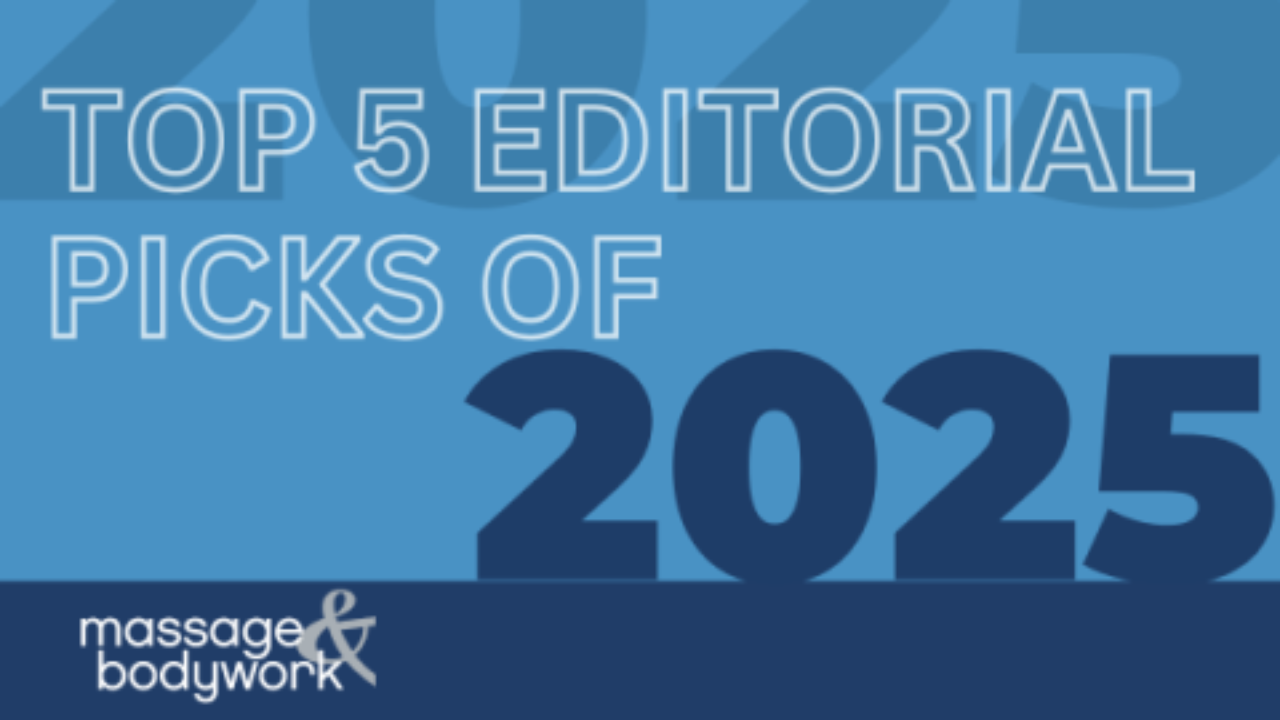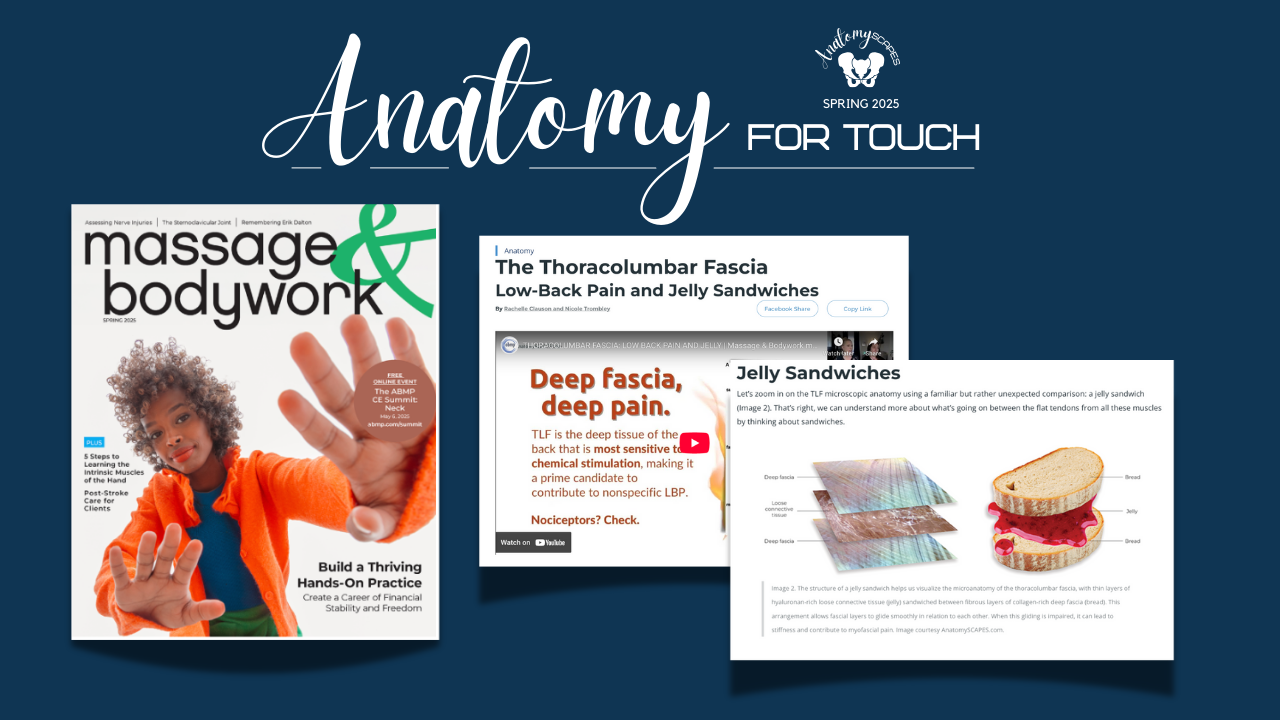BLOG: Anatomy for Touch
Thirty trillion cells make up the human body, but the body is not only made of cells. These cellular superstars are woven together by a living scaffolding called the extracellular matrix—a fabric of protein fibers and watery gels that provides structural support and gives the human body its recog...

We're excited to announce that our "Anatomy for Touch" column article "The Sciatic Nerve: A 3D View from the Inside Out" has been selected as one of the Top 5 Editorial Picks from Massage & Bodywork magazine for 2025! 🎉
In this article, we explored the sciatic nerve as a dynamic three-dimensional...
Collagen is everywhere in the body. The 30 trillion cells that make up the human body are held together in a matrix of collagen fibers that provides structural support and gives the body its recognizable form.
In episode 533 of The ABMP Podcast, Rachelle and Nicole explore all t...
The biceps brachii muscle is one of the most well-known muscles in the human body. Ask anyone to flex their biceps, they will probably roll up their sleeves to show off their “guns.” But how well do we know the biceps story? Beyond the muscle belly and tendon, a lesser-known part of the biceps muscl...
NEW: The latest BODYTALK podcast just dropped featuring a conversation with AnatomySCAPES Co-Directors Rachelle Clauson and Nicole Trombley.
We had a blast chatting with the always delightful and ever-so-insightful David Lesondak for the newest episode of his podcast BodyTalk. We talked about…
- F ...
The musculoskeletal system is at the heart of anatomy education for most massage therapists. But when we add the fascial system, how does that change the movement story?
In episode 517 of The ABMP Podcast, Rachelle and Nicole discuss a lesser-known part of the force-transmitting sys...
The sciatic nerve is massive. It’s both the longest and thickest nerve in the human body. It’s also among the body’s most notorious nerves. With up to 40% of people experiencing sciatica at some point in their lifetime, the name of this nerve has made its way into everyday vocabulary. Compression...
And we're back for 2025!
We're excited to continue to guest host The ABMP Podcast in 2025. Our first episode of the year focused on an ever evolving and well-debated topic: what is fascia???
Fascia has been a hot topic in both research and hands-on therapy for some time now. While the idea that ma...
The World Health Organization estimates that 90% of LBP is “non-specific,” meaning the pain is not connected to a known disease or structural problem. Perhaps even more concerning, by some estimates, up to 84% of the population will experience low back pain (LBP) within their lifetime. All that adds...
The Massage & Bodywork editors have a lot of favorites from this year’s bevy of articles. Here are their top Massage & Bodywork picks for 2024.
“For me, this is the star of the show in 2024. Nicole’s conversation about fat is profound and should change how MTs think of this tissue that mak...
We are so honored to have one of our podcasts named among the 🏆 TOP 5 PODCASTS of 2024 for The ABMP Podcast.
The ABMP podcast is the leading podcast in the massage industry and produces over 72 episodes a year (!!) with over 200,000 downloads. In 2024, AnatomySCAPES contributed by hosting a 3-part...
Learning to recognize anatomy through touch is very different than recognizing it by sight. Nothing is color-coded on your clients’ bodies as they are in your anatomy books. (Wouldn’t that be nice!?) And the boundaries of soft structures are often less obvious in real life than in drawings. Muscles ...
Nicole & Rachelle are helping guest hosting the ABMP podcast in 2024. Our third episode just dropped—Your Practice in 3D: Understanding Tissue Relationships. 🎧Listen here. 🎧
As massage therapists, we spend a lot of time mastering anatomy—learning specialized vocabulary and the locations of muscles,...
For most of us, learning anatomy starts with seeing. We build anatomy maps in our minds with images from atlases and books. We see as much as we can, memorize shapes and locations, systems and regions, and layer in more detail each time we look. Our mental maps guide our touch and shape what we perc...
Our culture’s got a big “fat problem” (and it’s not the global obesity epidemic). Fat is among the body’s most vilified and ignored tissues. Yet, as bodyworkers, it’s one of the tissues we manipulate the most in all our clients, regardless of body size. Whether you use more superficial modalities or...
Our organs slip and slide over each other all the time. As we breathe, digest, and move, the liver and large intestine slide across each other, the stomach and spleen slip around each other, and the bladder and intestines glide over each other to accommodate movements in our everyday lives. A thin m...
Rachelle & Nicole were recent guests on the Thinking Practitioner Podcast with Til Luchau and Whitney Lowe where we discussed our Anatomy for Touch column on the surprising sensitivity and functional significance of the ankle's fascial retinacula. Rachelle also shares some of her work on the Fascial...
Nicole & Rachelle are guest hosting the ABMP podcast in 2024. Our second episode just dropped— FEELING Anatomy: Your Practice in 3D. Listen here.
Being a skillful feeler is a huge part of what we do in the massage room. And beyond being a good palpator, our touch influences the anatomy our clients...





















